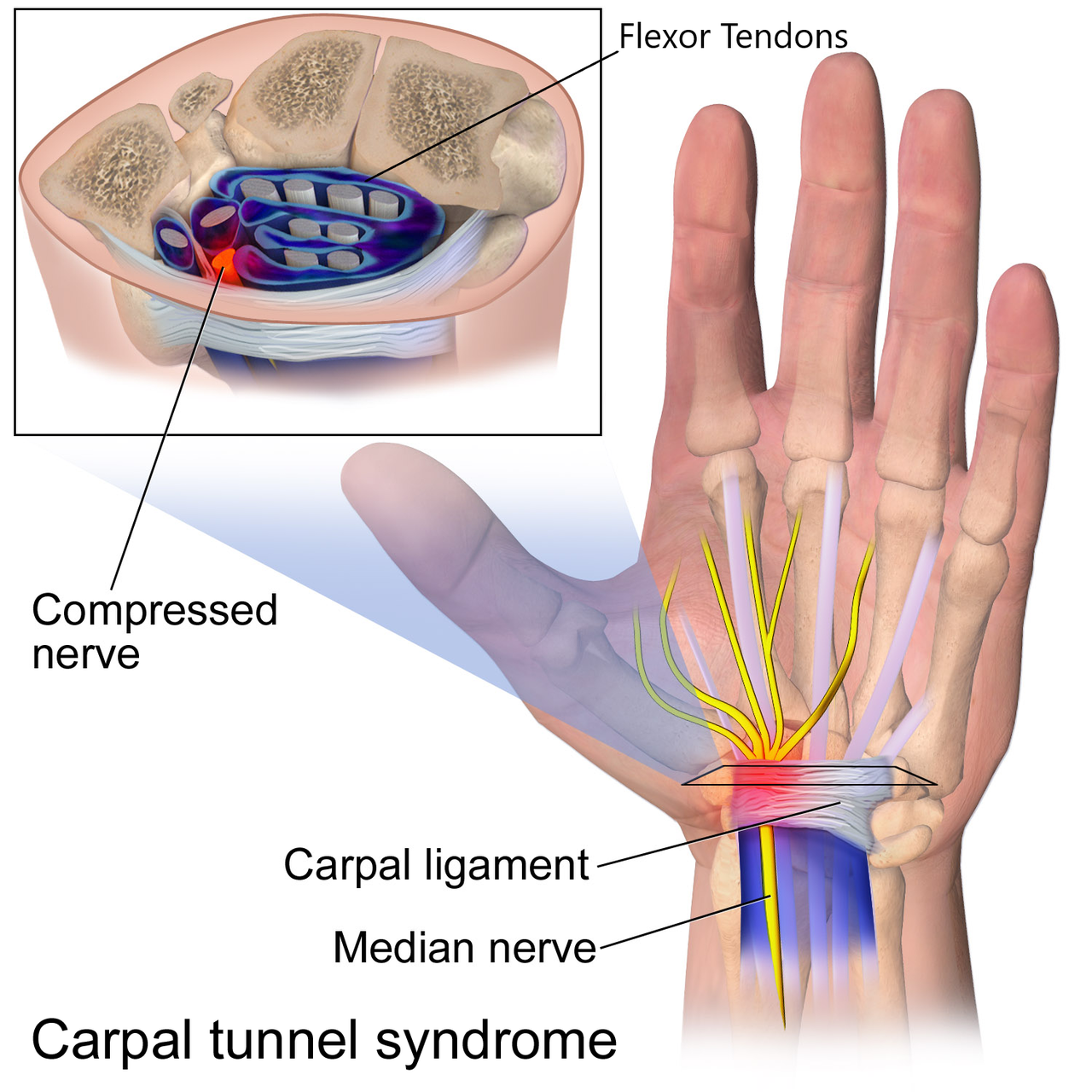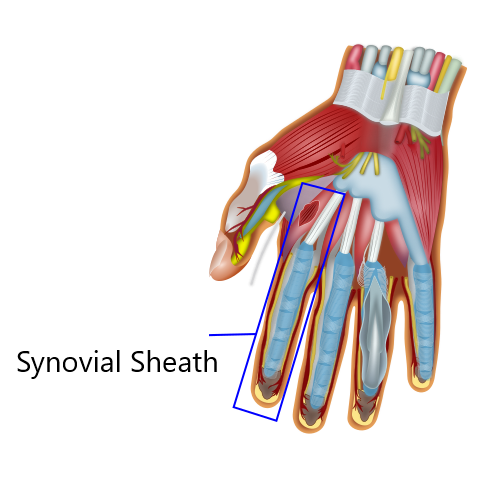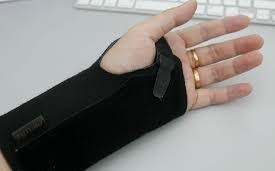April 14, 2020
Carpal tunnel syndrome is one of the more common overuse injuries we see in the wrist and hand. It often presents as numbness in the hand and fingers, and can progress to pain, weakness and muscle wasting in the hand. So, what is carpal tunnel syndrome, what causes it, and what can be done once we start to experience it?
Wrist Anatomy
To understand what carpal tunnel syndrome is, we first need an understanding of the anatomy of the wrist and hand. The wrist and hand are made up of several bones, which have ligaments that hold them together. The carpal tunnel itself is made up of multiple bones in the wrist (carpal bones) that create the floor of the tunnel, and the roof is made up of the flexor retinaculum, also called the transverse carpal ligament. We then have muscles and tendons that attach to various parts of the bones in our wrist and fingers to make them move. These muscles that allow us to flex/close our hand start up near the inside of our elbow, and attach via tendons to the fingers. There are nine of these tendons and they pass through the carpal tunnel. The tendons are covered by a synovial sheath, which provided lubrication for the tendons as they move back and forth during use. Also running through the carpal tunnel, is the median nerve. It is compression to the median nerve that causes carpal tunnel symptoms.
 Causes of Carpal Tunnel Syndrome
Causes of Carpal Tunnel Syndrome
Now that we have a better understanding of the carpal tunnel and its components, how/why do we experience the aforementioned symptoms? The simple answer is the median nerve experiences compression. As mentioned before, the hand flexor tendons are encased by a synovial sheath, with synovial fluid inside the sheath to provide lubrication to the tendons. We can develop swelling within the synovial sheaths, which causes them to expand and take up more space within the carpal tunnel. If this swelling is significant enough to then compress the median nerve, we can develop one or multiple symptoms listed below:
- Tingling or numbness in the thumb, index, middle and part of the ring finger or palm.
- Shock-like pain into the thumb, index, middle and part of the ring finger or palm.
- Pain that radiates from the wrist up into the forearm.
- Weakness in the hand, with difficulty performing fine motor tasks with the involved hand.
- Muscle wasting, usually seen in the thenar eminence of the thumb.

There are several reasons we can develop swelling within the tendons and synovial sheaths, many listed below:
- Overuse- Performing the same repetitive motions with the hands/wrists can irritate the tendons/synovial sheaths and cause swelling.
- Prolonged wrist flexion or extension positions- Performing activities which create excessive flexion or extension of the wrist for prolonged periods of time can irritate the tendons/synovial sheaths and cause swelling.
- Hereditary- We all have anatomical differences within our body structures. Some may have a smaller carpal tunnel than others, which means less space to accommodate for the swelling of tendon sheaths.
- Pregnancy- During pregnancy the release of certain hormones can cause increased swelling throughout the body, including this area.
- Other health conditions- Conditions such as Diabetes Mellitus and rheumatoid arthritis can lead to swelling in these areas.
How to Treat Carpal Tunnel Syndrome
One of the most important aspects of treating carpal tunnel syndrome is early diagnosis. If you start to experience numbness, tingling or pain in your hand during use or after being in prolonged positions, it may be time to speak with your doctor or physical therapist. Early diagnosis can reduce the severity of swelling, and subsequent median nerve compression. A common sign of carpal tunnel syndrome is experiencing numbness/tingling in the hand(s) and being able to shake it out to relieve the symptoms.
Activity modification is another key component to reducing symptoms. As stated earlier, repetitive use can cause irritation and swelling. We need to modify our activities so we do not continue to create the repetitive stresses to these areas. For example, if you love to garden, but develop symptoms during or after a few hours in the garden, activity modification is needed. This means performing shorter chunks of time in the garden, and taking more frequent breaks from using the hands. Also, modifying postures during repetitive movements can help reduce stress. Most of us spend time on the computer for work, and improper sitting, arm and hand postures can lead to added stress and irritation.
Wearing wrist splints during activities and while sleeping can also be beneficial. The use of a wrist splint reduces the movement of the wrist, which reduces the stress to the tendons in the carpal tunnel. Wearing it while we sleep prevents us from putting our wrist in prolonged flexion or extension, which would cause compression to the median nerve. These splints are called wrist cock-up splints and can be found at your local pharmacy stores. You should consult with your doctor or physical therapist before use.

Physical therapy can also help treat carpal tunnel syndrome. There are often impairments with the muscles, tendons and bones that we are able to assess and treat, that will help reduce the severity, frequency and duration of your symptoms. We can determine if you would benefit from use of wrist splints, and help teach proper activity modification. If you have any questions about carpal tunnel syndrome or how Portland Physical Therapy can help, contact us at 207-828-4455 or info@pptmaine.com



